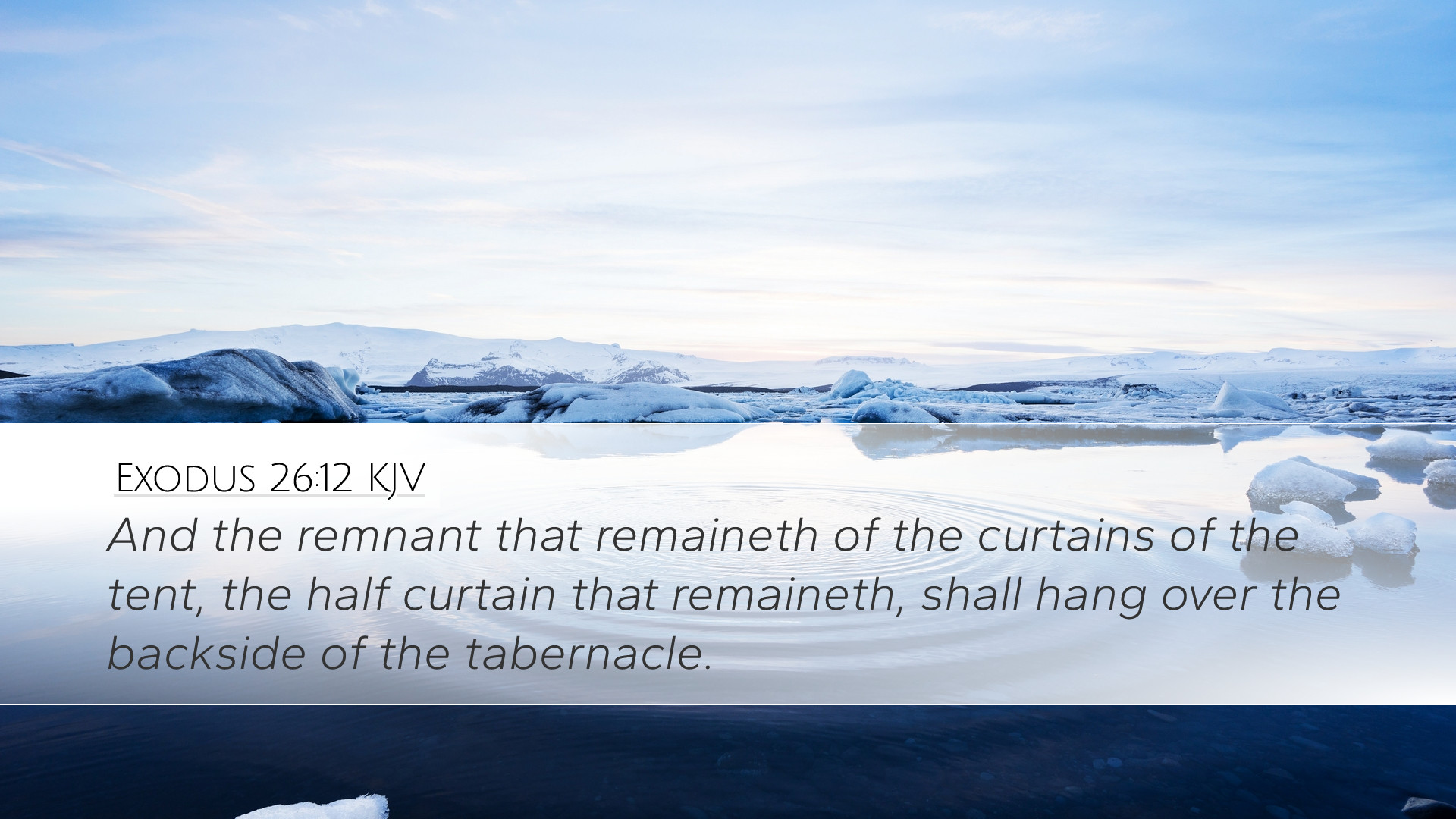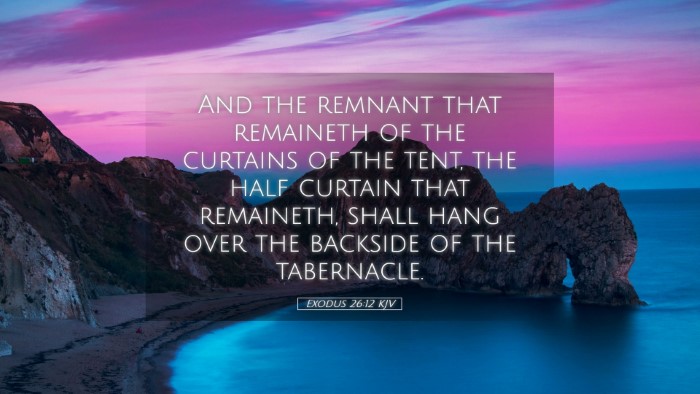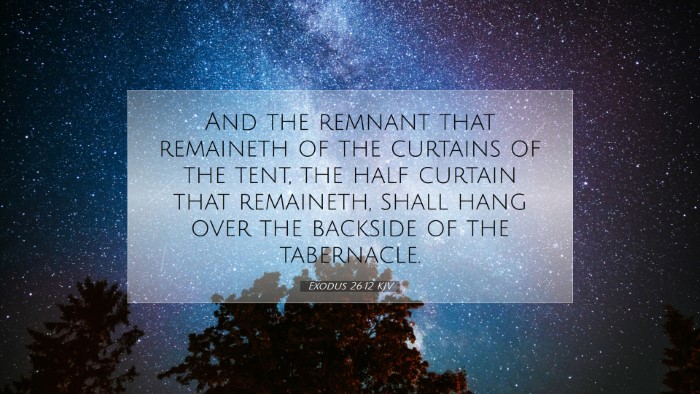Exodus 26:12 Commentary
Exodus 26:12 states: "And the remnant that remains of the curtains of the tent, the half curtain that remains, shall hang over the back of the tabernacle." This verse is part of the detailed instructions God gave to Moses regarding the construction of the tabernacle, the dwelling place for the Lord among His people. The significance of this verse goes beyond mere construction details; it speaks volumes about God's intended relationship with His people.
Contextual Analysis
The tabernacle and its structure represented God’s presence with Israel during their wanderings in the wilderness. The instructions provided by God were extremely meticulous, emphasizing the sacredness of the space where He would dwell. In this regard, Matthew Henry notes that the precise specifications highlight the prominence of God’s law and holiness, reflecting an awe-inspiring reverence that believers are to maintain toward divine matters.
The Significance of the Curtains
The curtains of the tabernacle served not only as a physical covering but also symbolized the separation between God and humanity, a veil separating the Holy from the profane. Albert Barnes elaborates that the "remnant" mentioned indicates God's provision and sufficiency. The imperfect and transient nature of the materials used in the tabernacle construction represents the brokenness of human existence and the need for redemption.
Symbolism of the Remaining Curtains
- Divine Protection: The remaining half curtain that was to hang over the back signifies God’s continual protection over His people.
- Representation of the Heavenly: The curtains symbolically represent the rolling back of heaven to allow for God's presence on earth.
- Sign of Impermanence: The use of curtains illustrates the temporary nature of the old covenant and the foreshadowing of the coming permanence of Christ's sacrifice.
Theological Implications
Adam Clarke discusses the theological implications, noting that every element of the tabernacle was designed to reveal God’s character and plan for humanity. The positioning of the curtains was not arbitrary; it served a purpose to remind the Israelites of their unique relationship with God while simultaneously acknowledging their need for atonement.
The Duality of Access
In the New Testament context, the remnants of the curtain can be seen as anticipating the ultimate sacrifice of Christ, who through His death and resurrection, would tear the veil that separates humanity from God. This profound access to the Holy of Holies is reflected in Hebrews 10:19-20, where believers are encouraged to draw near to God.
Practical Application for Believers
As we reflect on Exodus 26:12, it prompts believers to consider their own spiritual lives:
- Understanding God’s Provision: Just as the curtains served a divine purpose, God provides for our needs in the most specific ways.
- Living in His Presence: Believers are reminded of God's ongoing desire to dwell among them, encouraging a lifestyle that cultivates His presence.
- Acknowledging Our Brokenness: The transient nature of the materials used to build the tabernacle should lead to humility, recognizing our need for grace.
Conclusion
Exodus 26:12 offers a wealth of theological depth and practical relevance. The instructions regarding the tabernacle's structure serve as a reminder of God’s holiness, our need for atonement, and the provision found in Christ. The call for reflection on God’s presence and how we approach Him is as pertinent today as it was to the Israelites in the wilderness.


